Header: Jeffery Erhunse via Unsplash.
This is an article published in the series to belonging*, as the first step of our work towards purpose and belonging. This series is made possible by the Open Society Foundations. "to belonging" is a long-term project that aims to change the discourse around diversity and inclusion to one of belonging. Anti-racism, feminism and justice will become the focus and should lead to a radical systemic change in the impact sector, from "power over" and "power for" to "power with".
“The revolution will not be diversity and inclusion trainings” – Lisa Ko; @iamlisako
Among the countless voices that have digitally supported the protests against yet another murder of a black person in the US, this tweet by Lisa Ko got me thinking and rethinking about the role and the meaning of diversity and inclusion and the urge for radical change.
Here are a few thoughts.
What we know is what we don’t know.
The usual (and misleading) expectation towards diversity and inclusion advocates, consultants or trainers is that they come in with fixed formulas to create fixed solutions to fixed problems.
By attending a few Diversity, Equity and Inclusion (DEI) meetups and by interacting with some people in the field, I have realised that the experience and strategies put in place are very similar for many practitioners, even those in very different organizations or companies.
DEI consultants are usually called to come in and create awareness, create a space for diversity, and create strategies to innovate diversity management.
They are expected, and also often expect, to be mainly creating flashy material for employers’ branding work, and are driven by results & metrics to demonstrate the impact of their work on the company’s bottom line - not on the wellbeing of their employees, their feeling of “belonging”, or a critical confrontation of their organisational structure, the power relations within it and the way in which they are racist, misogynistic and/or disabling people.
So there you have it: Another business case.
I have stumbled across many companies looking for a DEI strategy almost exclusively oriented towards increasing revenue and productivity, and many practitioners who thought that this is how the DEI work can be summed up. But is this really what DEI work is about?
I was an employee at a Berlin start-up. I have experienced the contradictions and various aspects of the city's most vibrant business ecosystem.
Studying and working at the same time allowed me to counterbalance the academic dimension with a more practical experience. It was precisely the combination of my educational and work experience that generated a genuine enthusiasm for diversity and inclusion work.
It always starts like this: a genuine enthusiasm and a firm belief that this work is terribly necessary.
Yet there always comes a time when enthusiasm collides with reality.
When I first encountered the resistance typical of the business world to a more structural approach to diversity and inclusion issues, I thought that the resistance I encountered was due to the fact that I was a novice, not persuasive enough, not knowing the secret "technique" to convince management that the cause was important.
I was determined to do better, to use the right words for what they call "management buy-in" in the industry, to study business cases and have all the most important data in the palm of my hand.
Until I realized that in this way I was falling into the most clichéd of traps: adjusting to a system that empties DEI's work of its real value.
This realization was so strong that, for a moment, I stopped and asked myself: is it really worth it?
What we don’t see is what we need to explore
I like to think of DEI work as an iceberg. The most immediate (and easiest), most visible part of this work is above the surface: portraying people from diverse backgrounds in the social media platform or marketing material, organizing diversity training, committing to hiring more women.
But the biggest, deepest and most impactful can only unfold if we are able to navigate the below-the-surface part: questioning the organizational structures already in place, looking at how decision-making, promotion processes, hiring approaches are conducted; auditing the status of salary (in)equity, proactively strategizing a conscious application of anti-discrimination and inclusive principles in the leadership and recruitment, and so on.
If we strive for actual change, we need to go deeper into the meaning of diversity, inclusion and equity and beyond the most simplistic view of this work.
If creating a long-lasting impact is what the work is really about, then we have to take a step back and start with a whole series of actions for the undoing work: unlearn, deconstruct, demolish, unlock, unfasten, uncover, unleash, deactivate.
We need to stop creating, making, adding structures over structures and in doing so reproducing the already-in-place mechanism of inequalities.
If we really aim for a radical transformation of the status quo and we are active in the DEI field, we need to interrogate ourselves and our community (or space of practices) about how much privileges, power dynamics, structural inequalities and biases are there in the processes and organizational relations of organizations, companies and most importantly… in us, the practitioners.
From DEI towards Belonging: Challenging Power
I have heard many people defining diversity and inclusion work through the party-metaphor: “Diversity means being invited to the party, Inclusion is being invited to dance”.
I wish it could be so simple.
I wish it could be that easy to simply hand out invitations and create a cool party where literally all the people - regardless of their background - are involved.
However, let’s take a second to think about the context: where is the party taking place? Who is in charge of organizing it? Who is actually deciding which invitations will be handed out? Who is delivering the message? Who chooses the music? And, what about those people who don’t want to dance?
Most importantly: there are people who invite and people who are invited. Who are the people who invite and who are the people who get invited?
By diving deeper into the metaphor we easily discover that diversity and inclusion have little to do with parties and invitations and far more to do with power.
To encapsulate the actual work into the label “diversity and inclusion” – which makes it seem like a side-project or a role – or into metaphors, feels like an oversimplification of the intersection of the multiple layers and levels that this work really comes in with.
The moment we dare to look beyond the label, we are not only able to see a broader mandate for the “Diversity and Inclusion” mission. But we also realize that it is way more political, way more uncomfortable and way more complex work. And, indeed, extremely urgent work that we need to start doing now.
By jumping over the performative barrier, we see that DEI is about radical transformations, both personal and institutional, and that it is about new ways to think about work and imagine the economy.
By focusing properly on the mission, we realize that DEI work has a different name and it sounds more like "dismantling the pervasive systems of whiteness and patriarchy and redistributing power”.
By being willing to do the actual work, even its most uncomfortable part, we allow concepts such as anti-racism, belonging, power sharing, social justice, intersectionality, equity, feminist leadership, allyship for LGBTQIA+ community, and for disable-bodied individuals and individuals affected by mental health to have space.
We see accessibility, inclusive leadership, solidarity, inter- and intragenerational awareness and even new ways to imagine the economy and society. Before we even begin the act of creation (strategies, solutions, actions, projects), we need to stop and embark on a deep unlearning process.
If we are not ready to question the status quo of whatever environment, companies or spaces we find ourselves in, if we are not ready to challenge the dynamics of power and not willing to question the unbalanced hierarchies BEHIND the business and organizational narrative itself, we are likely to fail the real mission of this work.
The only way out of something broken is the way through. Through transformation and radical commitment for change.
Margherita Sgorbissa – Diversity & Inclusion Consultant – is on of tbd*’s columnists for the content series of “To Belonging”. The content in this series is supported by the Open Society Foundations. “To belonging” is designed to change the conversation around diversity and inclusion to one of “belonging”. It centres anti-racism, feminism and equity and calls for a radical systemic overhaul of the purpose sector from “power for” and “power over” towards “power with”.
Check out her website to (un)learn more: www.thisfairforce.com

